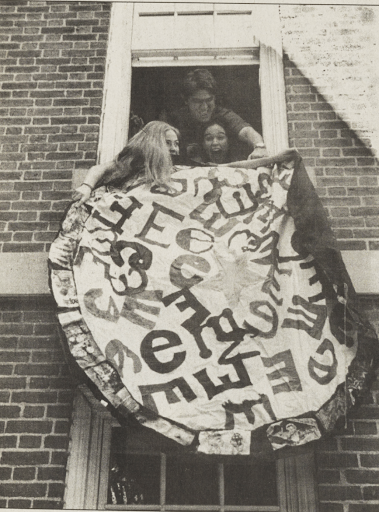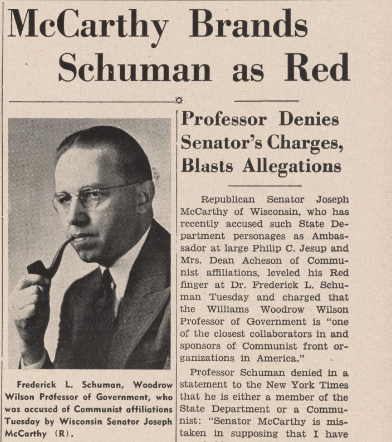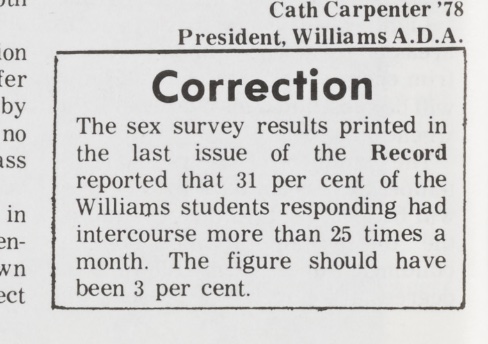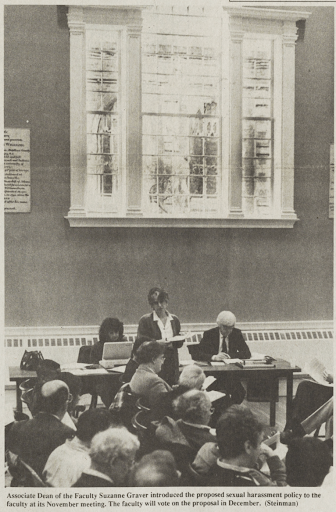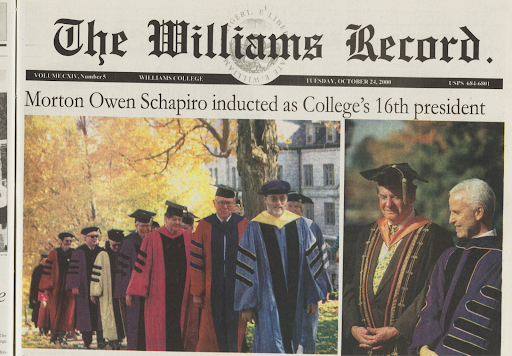
“This Week in Williams History” is a column that looks back at memorable moments in the College’s past through articles in the Record. This week in history, the men of Bryant House voted to allow women to live there, the dean’s office attempted to reduce underage drinking, and the College inducted its 16th president.
Oct. 24, 1972: Bryant House votes on coeducational housing
The Oct. 24, 1972, issue of the Record reported that the residents of Bryant House had voted to open their dorm to female residents for the first time. Since the outcome would not affect graduating seniors, only sophomores and juniors were allowed to vote. Of the 35 residents who attended the 7 p.m. meeting, 20 voted in support of the decision, 13 voted against, and two abstained.
Some of the residents who dissented thought the small number of women — an estimated 16 — would detract from the house because tensions could arise among them. “The small number [of women] would accentuate any problems among the women, and would detract from house unity,” the Record reported. Others feared that a co-ed Bryant would mean they would no longer be able to win the intramural trophy — a bygone tradition in which different residential houses compete in sports games. One sophomore, interviewed while wearing a bathrobe, told the Record that “if any girl saw me like this, she’d run into the bathroom and throw up four times.”
However, those in favor of coeducation thought the presence of women would vastly improve public perception of the house. The acceptance of coeducation, some thought, would disprove the misconception that Bryant was a fraternity not a residential house.
Some residents thought that the situation could be remedied if women lived in close proximity to them.
However, there was still disagreement after the vote over whether co-education would be good for the house — even among those who assented. Some who voted in favor wished they had more than the allotted 10 minutes to think through the decision.
Oct. 20, 1992: New party system appreciated by some students, detested by others
An article published in the Oct. 20, 1992, issue of the Record detailed students’ mixed responses to the College’s new party policies. The weekend before the article was published, the dean’s office implemented an interim alcohol policy that mandated that parties serving alcohol register with the office and check student IDs. Some students believed this policy succeeded in its efforts to reduce underage drinking at the College, while others thought it failed.
At a disco party at Dodd House, the policy found success, students told the Record. The party’s DJ, Greg Keswick ’93, then-president of Dodd John Engel ’93, and party server Guy Reavis ’93 all said it went smoothly. Reavis in particular believed the new policy fostered a healthy social atmosphere. “People weren’t having a total feeding frenzy over the beer,” he said.
Other students said the new policy hindered their social life. “There’s no way upper class houses will want to get together with freshman entries to sponsor parties [for fear of being arrested for serving alcohol to minors],” Latisha Azweem ’93 said.
Although the contentious policy was restrictive, it did lift a previous ban on kegs. “It’s nice to have the kegs back,” Engel said.
Oct. 24, 2000: The College welcomes a new president
On July 1, 2000, Morton Owen Schapiro began his tenure as the College’s 16th president. He was formally inducted on Oct. 22, which the Record reported in its Oct. 24, 2000, issue. After a procession of College faculty and representatives from 63 other academic institutions across the United States and England, the ceremonies were called to order by Carmen C. Massimiano, Jr., the then-sheriff of Berkshire County. During the ceremony, Schapiro received a symbolic key and copy of the charter from Carl W. Vogt ’58, president of the College emeritus.
The keynote speaker was William G. Bowen, then-president of the Andrew W. Mellon Foundation and former president of Princeton. In his speech, Bowen argued that the importance of a liberal arts education had been lost: “More and more students today focus only on money instead of on learning itself,” Bowen said. He went on to say that rather than focusing on the journey of education, students see their academic careers merely as a means to an end.
Schapiro’s speech shared a similar sentiment. He commented on the fact that fewer than 100,000 of 15 million students attended a liberal arts college at the time. Schapiro claimed that the College and its counterparts shared the responsibility of setting the “golden standard” for a liberal arts education and of making such an education available to all social strata. “Let history one day know that our community had the courage to seize the moment,” Schapiro said.









